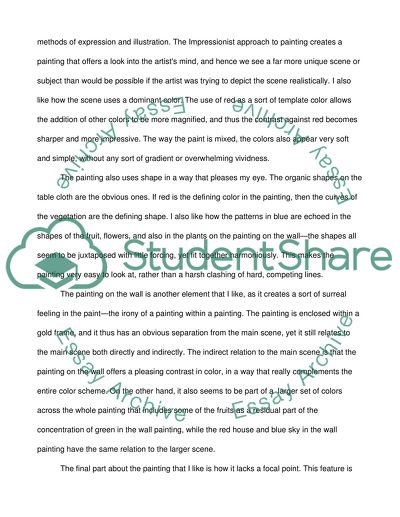Cite this document
(“Henri Matisse's The Dessert Essay Example | Topics and Well Written Essays - 1500 words”, n.d.)
Henri Matisse's The Dessert Essay Example | Topics and Well Written Essays - 1500 words. Retrieved from https://studentshare.org/visual-arts-film-studies/1439810-henri-matisses-the-dessert
Henri Matisse's The Dessert Essay Example | Topics and Well Written Essays - 1500 words. Retrieved from https://studentshare.org/visual-arts-film-studies/1439810-henri-matisses-the-dessert
(Henri Matisse'S The Dessert Essay Example | Topics and Well Written Essays - 1500 Words)
Henri Matisse'S The Dessert Essay Example | Topics and Well Written Essays - 1500 Words. https://studentshare.org/visual-arts-film-studies/1439810-henri-matisses-the-dessert.
Henri Matisse'S The Dessert Essay Example | Topics and Well Written Essays - 1500 Words. https://studentshare.org/visual-arts-film-studies/1439810-henri-matisses-the-dessert.
“Henri Matisse'S The Dessert Essay Example | Topics and Well Written Essays - 1500 Words”, n.d. https://studentshare.org/visual-arts-film-studies/1439810-henri-matisses-the-dessert.


